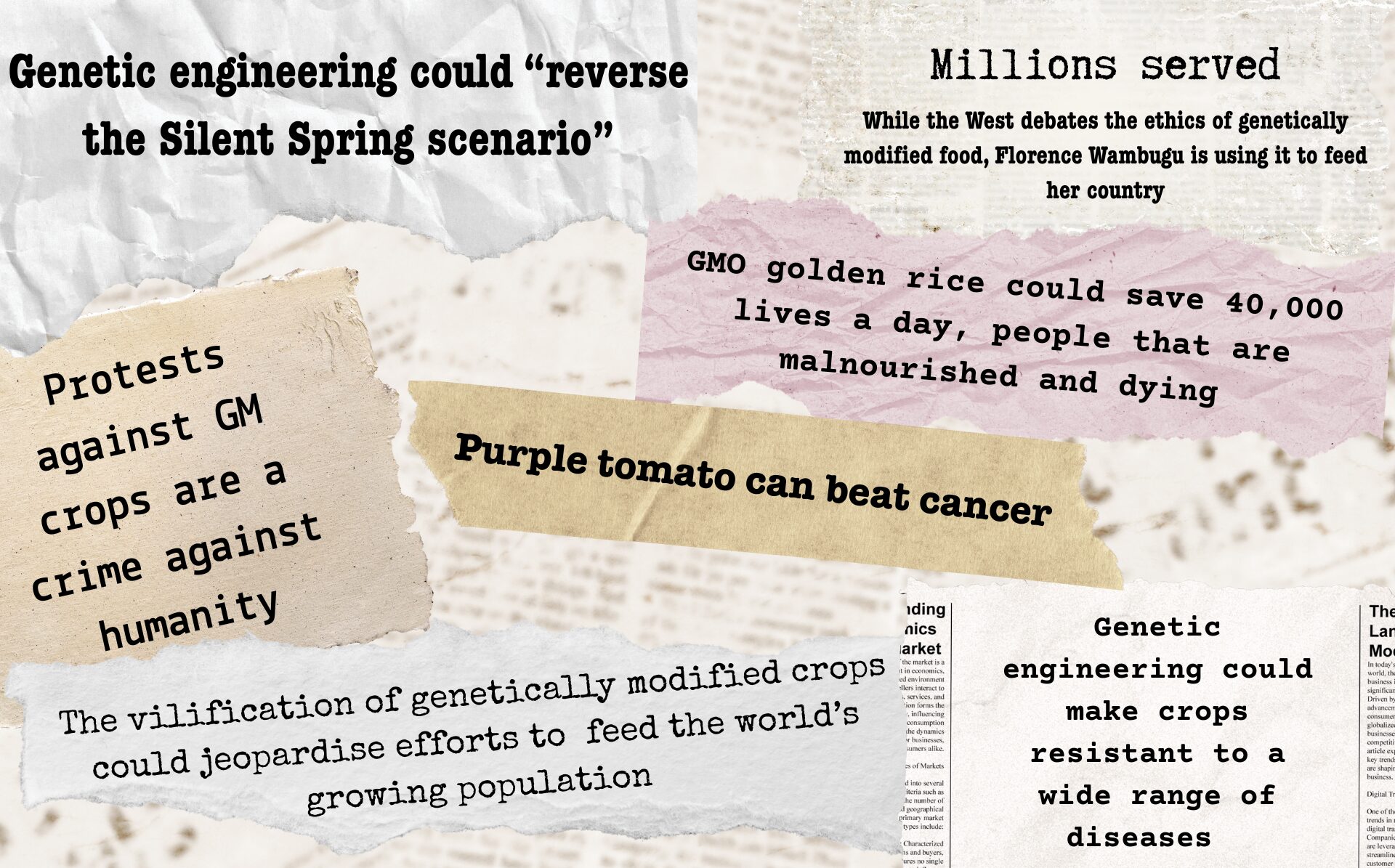Whatever happened to GM Golden Rice? And wasn’t GM salmon supposed to revolutionise aquaculture? Three decades after the first GMO crops were planted, Save Our Seeds, in collaboration with GMWatch, with contributions from Beyond GM, explores the fate of eight GMO promises once presented as game-changers. The conclusion: bold claims, dismal delivery.
In 1995, the US Department of Agriculture approved the first Bt maize and glyphosate-tolerant soybean, opening the way for large-scale cultivation of genetically modified (GM) crops. The promises came thick and fast: GMOs would feed the world, reduce chemical use, and save children from malnutrition. Thirty years on, GM crops occupy just 13% of global arable land, and largely concentrated in a handful of countries. Most of the promises remain unmet.
More yields, fewer chemicals?
The biotech industry pledged to “grow more with less” – less pesticide, less fertiliser, less environmental harm. GM crops were billed as a way to “reverse the Silent Spring scenario” described by Rachel Carson in her 1962 classic. They were said to boost yields, feed the hungry – especially in Africa – and save millions of children from malnutrition.
Instead, GM crops have led to more chemical-dependent monocultures, more environmental damage, and tighter corporate control over seeds and inputs. Rather than liberating farmers, GMOs have locked them into a cycle of patented products and costly chemicals. Countries that adopted GM crops have seen an immense concentration of the agricultural seed market in the hands of a few corporations — those invested in GM crops.
Marketing shift – from farmers to consumers and others
Facing public skepticism and unmet promises, GMO backers shifted focus. New projects targeted consumers directly, such as soybeans with a “health-conscious” genetic tweak. Others, such as GM Golden Rice and GM American chestnuts, were wrapped in moral imperatives: fighting malnutrition, saving endangered species.
But again, hype outpaced reality. Golden Rice, after decades of development, still hasn’t been widely planted or reached the target malnourished populations. And there is no evidence that GM chestnuts, which have proven defective, can help to restore American forests. These projects may serve more as PR tools than serious solutions, giving biotech companies a moral shield and a rhetorical weapon to attack critics and regulations.
Technological and market failures
What went wrong? Often, the problem wasn’t just technical – it was the mismatch between the problem and the solution. Genetically engineered herbicide tolerance, for example, could be expected to result in overuse of chemical weedkillers. Some projects may have failed due to poor business management or public rejection. Often, non-GM alternatives were already available, cheaper, and more effective.
“In many cases, GM crops seem to offer no clear benefit – except to secure a patent and shut out competition,” Claire Robinson from GMWatch commented. “Many non-GM disease-resistant crop varieties exist and pest and disease problems can most often be solved by improving farming systems – not by genetic engineering plants, which has proven ineffective. Why choose risky and patented GM crops when better options are available?”
Gene editing: new technology, same sales pitch
Today, the hype cycle continues with CRISPR/Cas and other gene-editing tools. The language hasn’t changed much. We are told these tools will reduce agrichemical use, improve nutrition, and help crops adapt to climate change.
But the reality? Of the few gene-edited crops ever commercialised, one — a soybean with modified oil content – has already flopped. And despite industry claims that gene editing would revolutionise plant breeding, a recent review found that only three gene-edited crop plants are currently being commercialised worldwide.
“The promises of agricultural biotechnology are always miraculous – and always for some undetermined time in the future,” said Pat Thomas from Beyond GM. “The appetite for these biotech miracles is huge, but after more than 30 years, the plate is still nearly empty.”
Time for a different harvest
Benny Haerlin, coordinator of Save Our Seeds, sums it up bluntly: “For decades, we’ve been told GMOs would solve problems like hunger, malnutrition, and climate stress – to no avail. Obviously there are striking problems with the technology. However, the underlying problems of injustice, inequality, and unsustainable farming systems cannot be solved by technologies anyway. The way forward lies in fair, ecological, and diverse agriculture, not patents.”
GMO Promises website
The new website, GMO Promises, is a resource for journalists, policymakers, campaigners, scientists, and investors looking to understand the real legacy of GMO technologies, and what lessons should be learned as the next wave of biotech rolls in.
The website presents eight prominent claims, and shows what happened in each case:
- GM crops to reduce pesticide use and “reverse the Silent Spring scenario”
- GM cassava to “double” production of African crops
- Fast-growing GM salmon for a “sustainable aquaculture industry”
- GM sweet potato to “feed countless people in Africa”
- GM as “shortcut to creating a truly American blight-resistant chestnut”
- GM Golden Rice “could save a million kids a year”
- GM crops with improved photosynthesis to “boost yields”
- GM soybean with a “health-conscious” genetic tweak
You can find the GMO Promises website here





